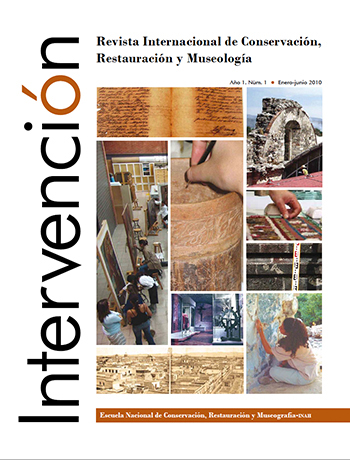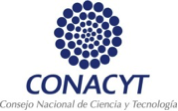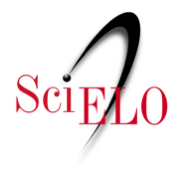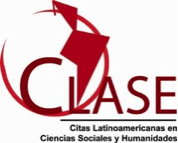The Writing-object in History Museums
DOI:
https://doi.org/10.30763/Intervencion.Rev1_Art8Keywords:
narrated space, object-based writing, museographic interference, presence effect, historical sensationAbstract
The present text aproaches a museological critic focused on the genre of the history museum, it locates the attained observations into a reference system that makes a distintion between place of science and place of culture, laying both elements (science and culture) and transform them into a distinction between consciousness and experience. Within the interrelation between historic discourse and museology relies the difference established by an object-writing that, as much as producing a cognitive experience, makes it posible to feel it like a real past experience. If the historic discourse finds one of its modes of expression at the museum, indeed a form of writing, this does not mean that it can escape from an indirect relationship with the construction of narratives and tales, whose meanings are transformed when they become cultural device-things.
Downloads
References
Anderson, Benedict
Imagined Communities, Londres y Nueva York, Verso. Anderson, Gail (ed.)
Reinventing the Museum. Historical and Contemporary Perspectives on the Paradigm Shift, Lanham, Altamira Press.
Ankersmit, Franklin
[1994] Historia y tropología. Ascenso y caída de la metáfora, Ricardo Martín Rubio (trad.), México, FCE.
Beretta, Marco (ed.)
From Private to Public. Natural Collections and Museums, Massachusetts, Science History Publications.
Brodsky, Marcelo
Memoria en construcción. El Debate sobre la ESMA, colección Lavistagorda, Buenos Aires, La Marca.
Cañizares-Esguerra, Jorge
Nature, Empire and Nation. Explorations of the History of Science in the Iberian World, Stanford, Stanford University Press.
Certeau, Michel de
[1990] La invención de lo cotidiano 1, Artes de hacer, Alejandro Pescador (trad.), México, UIA.
Daston, Lorraine y Katharine Park
Wonders and the Order of Nature, 1150-1750, Nueva York, Zone Books.
Debray, Régis
[1992] Vida y muerte de la imagen. Historia de la mirada en occidente, Ramón Hervás (trad.), Barcelona, Paidós.
Deloche, Bernard
“La spécificité du champ muséal”, en Bernard Deloche (ed.), Le musée virtuel. Vers une éthique des nouvelles images, París, Presses Universitaires de France, 116-123.
Findlen, Paula
Possessing Nature. Museums, Collecting, and Scientific Cultures in Early Modern Italy, Berkeley y Los Ángeles, University of California Press.
Genoways, Hugh H. y Mary Anne Andrei (eds.)
Museum Origins. Readings in Early Museum History & Philosophy, Walnut Creek, Left Coast Press.
Gillis, John R. (ed.)
Commemorations. The Politics of National Identity, Princeton, Princeton University Press.
Gumbrecht, Hans Ulrich
[2004] Producción de presencia. Lo que el significado no puede transmitir, Aldo Mazzucchelli (trad.), México, UIA.
Gutiérrez, Rodrigo
Monumento conmemorativo y espacio público en Iberoamérica, Madrid, Cátedra.
Hill, Kate
Culture and Class in English Public Museums, 1850-1914, Londres, Ashgate Publishing Company.
Hobsbawm, Eric y Terence Ranger (eds.)
The Invention of Tradition, Cambridge, The Press Syndicate of the University of Cambridge.
Karp, Ivan y Steven D. Lavine
Exhibiting Cultures. The Poetics and Politics of Museum Display, Washington y Londres, Smithsonian Institution.
Karp, Ivan, Christine Mullen Kreamer y Steven D. Lavine
Museum and Communities. The Politics of Public Culture, Washington y Londres, Smithsonian Institution.
Knell, Simon, Suzanne MacLeod y Sheila Watson (eds.)
Museum Revolutions. How Museums Change and are Changed, Londres, Routledge.
Mauries, Patrick
Cabinets of Curiosities, Londres, Thames & Hudson.
Mendiola, Alfonso
Retórica, comunicación y realidad. La construcción retórica de las batallas en las crónicas de la conquista, México,
UIA.
Morales Moreno, Luis Gerardo
Orígenes de la museología mexicana. Fuentes para el estudio histórico del Museo Nacional de México, 1790-1940,
México, UIA.
“El Primer Museo Nacional de México (1825-1857)”, en Esther Acevedo (coord.), Hacia otra historia del arte en México. De la estructura colonial a la exigencia nacional (1780-1860), México, CONACULTA, 36-62.
“De la historia cultural como objeto signo” (Introducción a Krzysztof Pomian: La Colección entre lo Visible y lo Invisible), en Valentina Torres-Septién (coord.), Producciones de sentido, México, UIA-Proyecto CONACYT, 119-131.
a “Invención de la Curiosidad Moderna y el Museo/Paradigma”, en Valentina Torres-Septién (coord.), Producciones de sentido 2. Algunos conceptos de la historia cultural, México, UIA Proyecto CONACYT, 29-48.
b “Ojos que no tocan: la nación inmaculada”, en Ilán Semo (coord.), La memoria dividida. La nación, íconos, metáforas, rituales, México, CONACULTA-Fractal, 263-288.
Nora, Pierre (coord.)
Les lieux de mémoire. Tomo II. La nation. París, Gallimard.
Pappe, Silvia
“El contexto como ilusión metodológica”, en José Monzón y Saúl Jerónimo (coords.), Reflexiones en torno a la historiografía contemporánea, México, UAM-A, 23-34.
Pomian, Krzysztof
Collectioneurs, amateurs et cureux: Paris et Vénétie, 1500-1800, París, Gallimard.
Ricoeur, Paul
La memoria, la historia, el olvido, Madrid, Trotta.
Vergara, Luis
“Discusiones contemporáneas en torno al carácter narrativo del discurso histórico”, Historia y Grafía 24: 19-54.
Zunzunegui, Santos 1990 Metamorfosis de la mirada. El museo como espacio del Sentido, Sevilla, Alfar.
Additional Files
Published
How to Cite
Issue
Section
License
Copyright (c) 2014 Intervención, Revista Internacional de Conservación, Restauración y Museología

This work is licensed under a Creative Commons Attribution-NonCommercial 4.0 International License.

Atribución-NoComercial 4.0 Internacional
https://creativecommons.org/licenses/by-nc/4.0/deed.es
Usted es libre de:
- Compartir — copiar y redistribuir el material en cualquier medio o formato
- Adaptar — remezclar, transformar y construir a partir del material
Bajo los siguientes términos:
-
Atribución — Usted debe dar crédito de manera adecuada, brindar un enlace a la licencia, e indicar si se han realizado cambios. Puede hacerlo en cualquier forma razonable, pero no de forma tal que sugiera que usted o su uso tienen el apoyo de la licenciante.
-
No Comercial — Usted no puede hacer uso del material con propósitos comerciales.




















